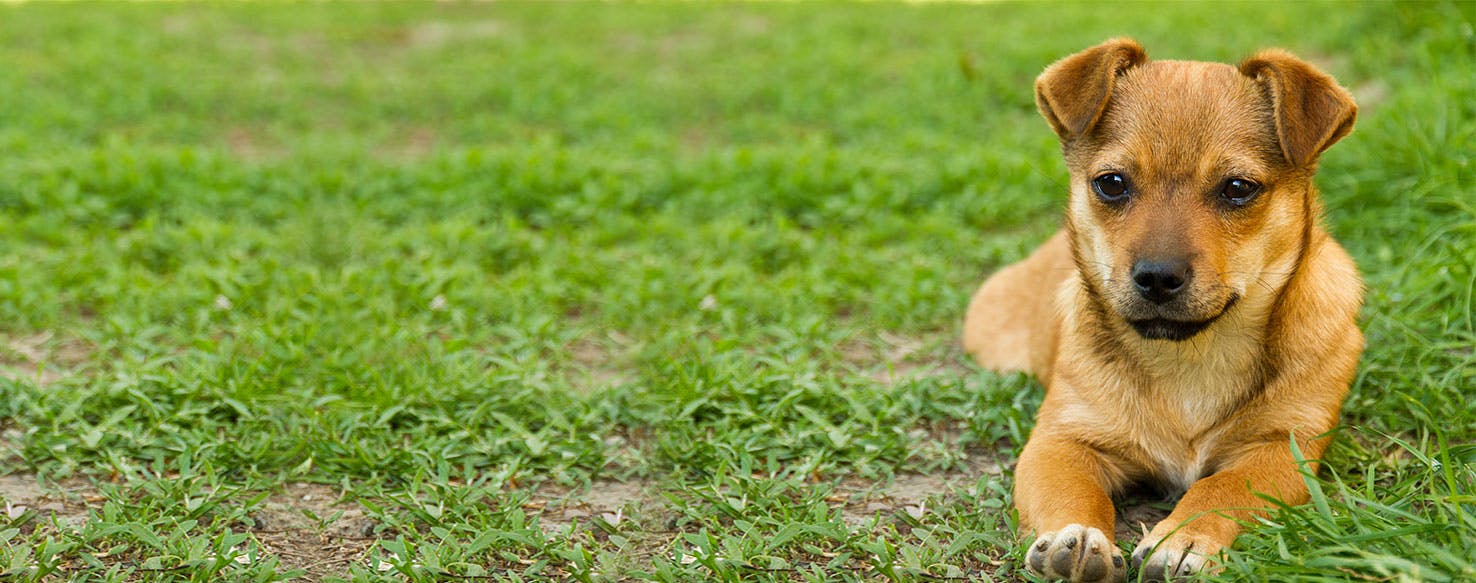- Home
- The Daily Wag!
- Senses
- Can Dogs See Green?

When you're a dog, it's not easy seeing green. However, while our furry friends aren't quite as good at seeing colors as us, they're actually much better at detecting colors than many people realize. Despite the commonly held misconception that dogs are colorblind, our fur-kids can actually see in color.
But the colors they see, and the way they see them, are different to the way we perceive the world. They can't see the difference between red and green, and have a limited color range in their vision when compared to us.
So, what exactly can and can't our canine companions see? Let's take a closer look.
Early research suggested that dogs couldn't perceive color and were only able to see the world in black, white, and shades of gray. As a result, there's a widespread belief throughout society that dogs are colorblind, but we now know that this simply isn't true.
But can dogs see green? Well, sort of. If an object is green, your dog's eyes will obviously still be able to detect it — there won't just be an empty void or a blank spot — but they may have trouble distinguishing it from its surroundings. This is because our furry friends perceive green, yellow, and red as the same yellowish hue.
So if you've thrown a red ball into a patch of green grass, your pet may have trouble picking it out on sight alone. And if dogs were allowed to drive, safely navigating an intersection featuring traffic lights would be something of a challenge. However, dogs may be able to tell the difference between green, yellow, and red if there are differing levels of brightness between the colors.
As for all the other colors of the rainbow, dogs perceive blue and purple as a second hue, and see cyan and magenta as gray. In other words, rather than seeing the world in black and white, they see it in blue, yellow, and gray.
Body Language
Check your dog's body language for signs they are using their vision to focus on an object, such as:<br/>
- Staring
- Alert
- Head Turning
- Ears Up
Other Signs
Other signs your dog is concentrating on looking at something include:<br/>
- Focusing
- Ignoring Distractions
- Lack Of Blinking
- Eyes Moving To Follow Object
To understand how dogs perceive colors the way they do, we need to take a look inside the eye. Human retinas are home to three color-sensitive cone cells — red, green, and blue. However, our canine companions only have two cones — yellow and blue. As a result, a dog's ability to detect color is actually quite similar to that of a person with deuteranopia (red-green color blindness).
Dogs see the world in shades of yellow, blue, and gray. More specifically, it's thought our fur-babies can see dark blue, light blue, gray, light yellow, and dark (brownish) yellow.
How do we know this? One of the most important studies done on the subject of doggy vision was completed by scientist Jay Neitz from the University of California. Neitz showed dogs three panels in a row — two of the panels were the same color but the third was different. If the dog could pick out the panel that was different and press it, he or she would receive a treat.
More recently, in 2017, Dr Marcello Siniscalchi and a team of researches from the department of veterinary medicine at the Univesity of Bari, Italy, dug further. The team employed a modified version of Ishihara's test, which is used to test color vision in humans, to conceal the image of a cat in a circle of red and green numbers. The results showed once again that dogs struggle to distinguish between the colors green and red.
Dogs aren't colorblind but their vision and ability to distinguish between colors is limited. With this in mind, you may need to take a slightly different approach when training or playing with your dog.
The most important thing to remember is that because dogs have trouble telling the difference between green and red, it's a good idea to choose toys and training aids in other colors. Now that we've mentioned this, you might be surprised to discover just how many of your dog's playthings (and, in fact, how many other toys on the market) seem to be bright red or orange in color!
Next time you're splashing out on some new toys for your pooch, look for products that are a bright shade of blue or yellow. If you're training your dog to fetch or find a particular object, choose something that's not red or green.
Remember, too, that it's important not to get frustrated with your dog if they don't see something you want them to. If they run straight past the ball or toy they're meant to be fetching, they're not being stupid or deliberately ignoring you; they simply may not have noticed the item because it's the exact same color as the grass it's lying in.
Have questions or concerns about your pet?
Chat with a veterinary professional in the Wag! app 24/7.
Get Vet ChatWritten by a Labrador Retriever lover Tim Falk
Veterinary reviewed by:
Published: 03/27/2018, edited: 04/06/2020
More articles by Tim Falk
